Coal ash as fertilizer: properties and rules of use
Ash has been used as fertilizer since the days of the first vegetable gardens. It is widely available, inexpensive, and easy to use. But the introduction of coal ash into the soil cannot be carried out without control. With such dressings, certain rules and proportions must be observed, and also taken into account for which plants and types of soil it can be used.
With all the usefulness of ash elements, it must be borne in mind that not every ash is suitable for fertilizers... The combustion product of coal, which was taken from a contaminated or radioactive zone, should not be used, because harmful substances accumulate in it, which will be consumed by plants.
Content:
- What does coal ash contain and what properties does it have?
- What crops are fed with coal fertilizer
- Norms and features of application
- Benefits of coal ash
What does coal ash contain and what properties does it have?
Coal soot can be produced by burning bituminous or lignite coal. Accordingly, it will differ in the proportions of the chemical composition, which contains a small amount:
- Calcium, which is essential for plant development. It takes part in carbohydrate-protein metabolism, therefore it is very useful for young crops with active growth. Also, calcium is necessary for plant roots, it helps to assimilate other trace elements found in the soil. This element is able to influence the acidity of the soil by binding some acids.
- Potassium, which takes part in the cell sap and takes an active part in photosynthesis and carbohydrate metabolism. It activates enzymes and affects the quality of vegetables and fruits.
- Phosphorus, which acts as an energy source for plants. It participates in the metabolic processes of the plant organism and has a direct effect on the degree of maturity of fruits and seeds, and, consequently, on the quality and quantity of the crop.
- Magnesium, which is part of chlorophyll and affects photosynthesis. The plant signals the lack of this element with yellowed leaves and their fall.
- Sodium, which promotes the transfer of carbohydrates, and a sufficient amount of the element helps to increase the resistance of plants to pathogenic environmental factors and low temperatures.
However, ash fertilizer is used quite rarely, because the minimum content of nutrients enters the soil in a state that is difficult to access for consumption by plants - these are silicates, which, under the influence of high temperatures, fuse and form glassy masses.
Types of coal fertilizers:
- Coal ash. This fertilizer is rich in silicon oxides, the content of which often exceeds 50%, therefore it is often used to dry and loosen wet, heavy clay soils. Fertilizer from coal improves the structure of homogeneous soils, increases their moisture transmission capacity and fertility. In addition, such fertilizer dressing practically does not contain chloride compounds.The use of coal fertilizer is unacceptable for sandy soils and soils with high acidity, since the high sulfur content is converted to sulfates and contributes to an increase in acidity. In this regard, coal fertilizers are recommended to be combined with calcium-containing, ammonium and organic (bird droppings and manure).
- Ash of brown coal. Brown coal is obtained under the influence of high pressure on plant masses, which are saturated with phosphorus, potassium and other mineral compounds. This top dressing is used as mineral fertilizer, which enriches poor soils with trace elements. Unlike coal ash, lignite ash reduces the level of soil acidity, improves its structure and saturates it with boron, manganese, copper, molybene, zinc and other components, which contributes to an increase in yield. Brown coal crumb contains glumic acids (about two percent) and is a raw material for obtaining glumates (fertilizers) with high physiological activity, which helps to improve the agrochemical properties of the soil and stimulate the activity of earth microorganisms. Also, glumates prevent the leaching of useful elements from the soil.
What crops are fed with coal fertilizer
It is recommended to apply coal ash when growing crops that actively consume sulfur. It is brought in to grow high-quality:
- mustard
- onions
- various types of cabbage
- garlic
- legumes
- radish
- swede
- horseradish
To increase the yield of these crops, the combustion product of coal is combined with gypsum. For nutrient-demanding crops, fertilization with stone ash will not bring any benefit, because it contains an insufficient amount of nutrients for them.
The crushed coal slag is introduced during the digging of the near-stem circles of fruit-bearing trees.
With regular feeding with coal ash, fluorine and potassium accumulate in the soil, because ash retains its usefulness in the soil for five years. But for the effectiveness of the use of such fertilizer, a combination with organic matter is necessary.
Ash and brown coal flour is often used in the manufacture of substrates for seedlings of cucumber and tomato crops. To do this, mix one part of peat and sand and 5% of crushed brown coal. The beneficial properties of such ash remain in the soil for three to five years. Lignite ash is effectively added to the compost of fine straw, grass and sawdust.
Norms and features of application
In loamy and heavy loamy soils, coal ash is introduced in the fall in small quantities - it is recommended to add no more than three kilograms per one hundred square meters. To increase the effect, such fertilizer should be combined with ammonium nitrate and organic matter, because by binding ammonium with sulfur ions, the loss of nitrogenous compounds is reduced.
Coal ash application rules:
- in heavy and clayey soils, ash is introduced to a depth of twenty centimeters
- due to leaching by precipitation, ash recommended to apply before winter
- coal ash is used dry and as solutions (100 grams of an element per 10 liters of water), but the solutions contain a reduced amount of useful elements
- ash is stored exclusively in dry rooms, in a tightly closed container. When moisture gets in, the usefulness of the fertilizer is lost
- the simultaneous introduction of ash and nitrogen-containing dressings is not recommended
- ash can be used to stimulate seed germination. For this, an ash infusion is prepared, which must be kept for a day and the seed material is soaked in it.
It should also be borne in mind that the coal-tar feed contains sulfites, which are poisonous for plant crops, but they undergo oxidation under the influence of oxygen and acquire useful properties.As a result, the products of coal combustion should not be added immediately, the ash residue must be sieved and dried on a dry floor for at least a week and a half. Then the slag is stored in a well-closed container.
The rate of application of ash fertilizers of brown coal per square meter is 3-5 kg.
An excess of such fertilizer will slow down crop development and increase the strontium level in the soil. Lignite derivatives - glumates are recommended to be used at a rate of 50-60 grams per square meter, and crumb - no more than 12 grams. Excessive application of these elements leads to the suppression of vegetation and the destruction of beneficial microorganisms, which negatively affects the composition of the soil.
Benefits of coal ash
If ash is applied correctly and in the right proportions, then this fertilizer will have practically no flaws. Experienced gardeners prefer ash feeding due to a number of advantages:
- Safety and naturalness. Ash does not harm the human body, does not emit an unpleasant odor and does not cause skin irritation.
- Cheapness and availability. Coal ash can be made independently, purchased at specialized retail outlets, or taken from friends who are heated with coal. Fertilizer is consumed economically and can be stored for a long time.
- Protective properties. Coal ash is a good prevention of plant pests... When ash is sprinkled on the soil around the plants, the attacks of snails, slugs, ants, wireworm, flies and whites.
- Prevention of diseases caused by fungi. For this, the plants are sprayed with an ash solution.
There is an opinion that coal combustion products are harmful to the human body, because they can contain heavy metals and radioactive elements. But plants, in the presence of these elements, develop quite actively. This opinion is true in part. The accumulation of harmful substances in plant tissues is possible when the level of application of such fertilizer to the soil is exceeded, that is, if more than 5% of the total volume of the soil is applied.
Coal derivatives are used everywhere and are of agricultural importance for farmers in many countries. Unlike wood, it contains more calcium, sodium and copper salts and less - potassium and phosphorus. Therefore, the combustion products of coal are indispensable when applied to acidified soil areas to normalize their acidity, especially when planting potatoes and a tomato... Solanaceous crops from such fertilization are saturated with copper, which resists late blight.
Subject to the norms of applying coal ash and not overdoing it in this matter, the accumulation of harmful substances is not observed, which means that it is not capable of causing damage to the human body.
More information can be found in the video:



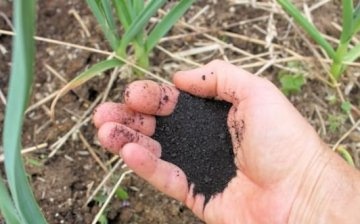

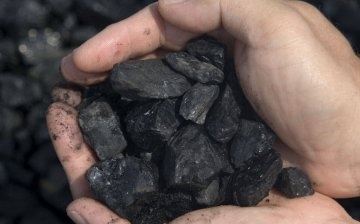
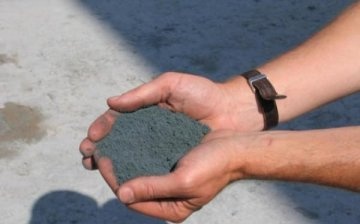
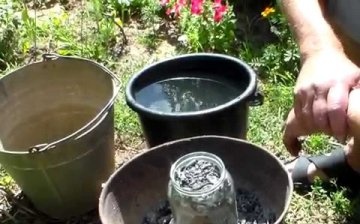
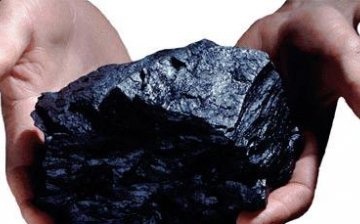






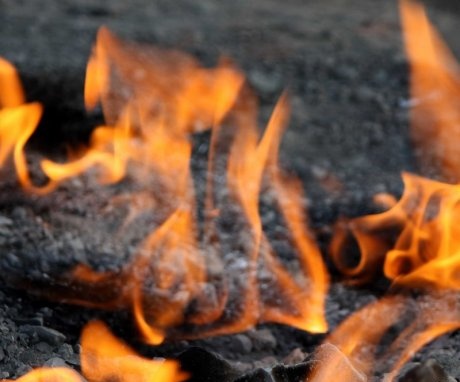
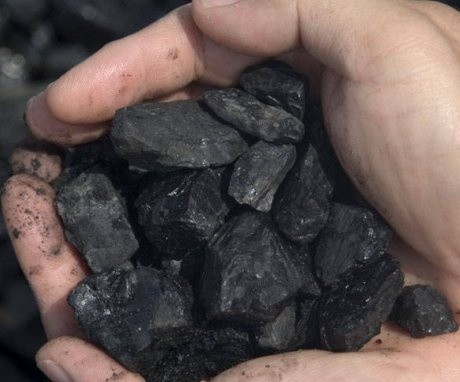

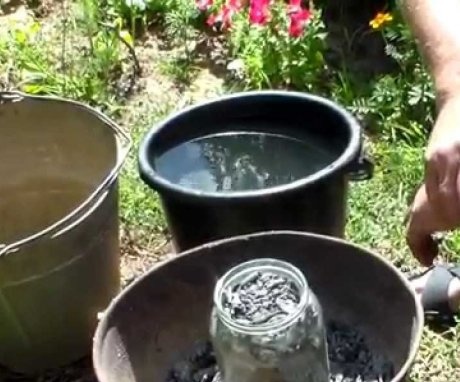
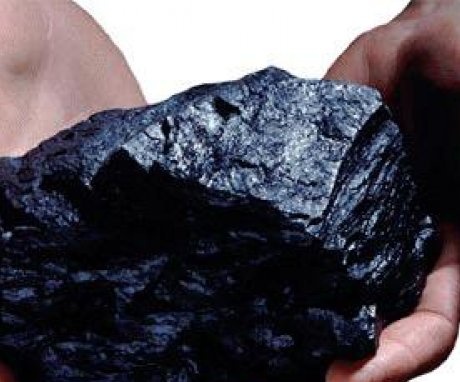
Whenever possible, I try to burn the weeds on the site after weeding, and I bring the resulting ash into the soil together with organic fertilizers when digging in the fall. I am satisfied with the result.